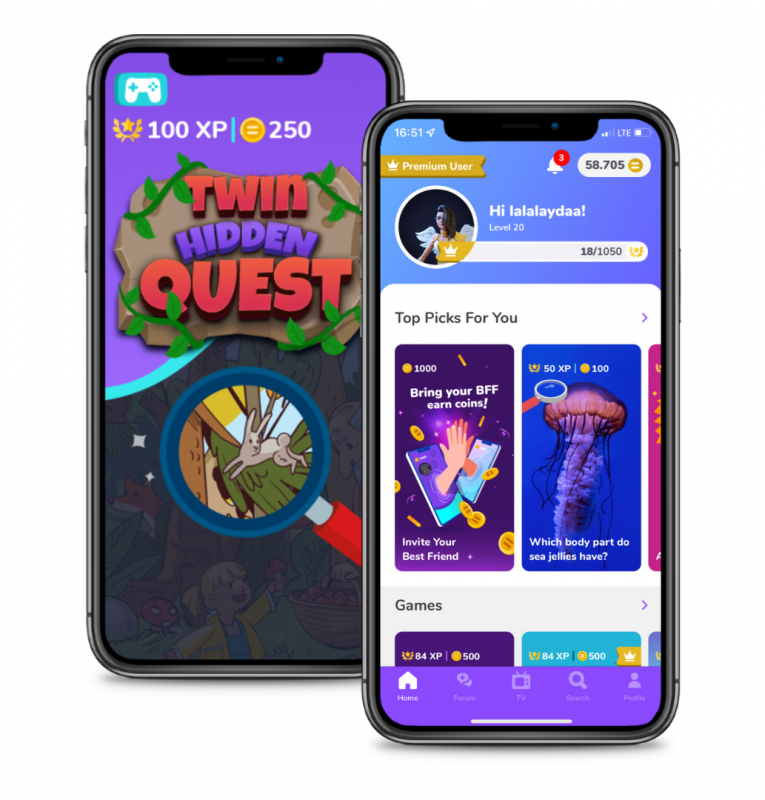Sustainability and environmental education is an important part of our future. We have a responsibility to the planet and to future generations to ensure that our actions today are sustainable and that we are taking steps towards a safer, healthier, and more prosperous future. One way to do this is by teaching Sustainable Development Goals (SDGs), which are a set of 17 goals established by the United Nations to tackle global challenges such as poverty, inequality, and climate change.
In this blog, we will explore the importance of teaching Sustainable Development Goals and how to do it effectively. We will discuss the benefits of SDG education, strategies for teaching SDGs, resources for teaching SDGs, and how to measure the impact of SDG education. We will also look at how technology can be used to teach SDGs. By the end of this blog, you will have a better understanding of how to introduce sustainability and environmental education in your classroom or organization.
Introduction to Sustainable Development Goals
The United Nations Sustainable Development Goals (SDGs) are a set of 17 global goals that aim to end poverty, protect the planet, and ensure that all people have access to quality education, health care, and economic opportunities. The SDGs were launched in 2015 and are the successor to the Millennium Development Goals. They are a call to action for all countries to take urgent action to address global challenges such as poverty, inequality, climate change, and environmental degradation.
The SDGs are not only a set of goals, but also a blueprint for creating a more sustainable world. They are a universal call to action to governments, businesses, and people everywhere to work together to ensure that all people can live a healthy and fulfilling life, while also protecting the planet.
Understanding the 17 UN Sustainable Development Goals
The 17 United Nations Sustainable Development Goals are:
- No Poverty
- Zero Hunger
- Good Health and Well-Being
- Quality Education
- Gender Equality
- Clean Water and Sanitation
- Affordable and Clean Energy
- Decent Work and Economic Growth
- Industry, Innovation and Infrastructure
- Reduced Inequalities
- Sustainable Cities and Communities
- Responsible Consumption and Production
- Climate Action
- Life Below Water
- Life On Land
- Peace, Justice and Strong Institutions
- Partnerships for the Goals
These goals are interlinked and, together, they provide a comprehensive framework for creating a sustainable and equitable future. They are also a reminder that, while progress has been made in some areas, there is still much work to be done in others.

[lightbox id=”contact-form-lesson-form” width=”600px” padding=”20px”] [block id=”contact-form-lesson-form”][/lightbox]
The Benefits of Sustainable Development Goal Education
There are many benefits to teaching Sustainable Development Goals. By teaching SDGs, students will gain an understanding of the global challenges we are facing, as well as the solutions that are needed to address them. They will learn about the importance of sustainability and the need to take action to protect the planet.
Click to read “How to incorporate Sustainable Development Goals into the classroom?” blog post.
In addition, teaching SDGs can help to foster a sense of hope and possibility. By showing students that the world is not beyond repair and that there are solutions to the challenges we face, they will be more likely to get involved and take action.
Teaching SDGs can also help to develop critical thinking skills, as students will be encouraged to think about the interconnectedness of global issues and how their actions can have an impact. Finally, teaching SDGs can help to foster empathy and understanding, as students learn about the importance of working together to create a more just and sustainable world.
Climate Change Education & Sustainable Development Goals
Climate change is one of the most pressing global challenges of our time. It is a threat to our planet, our health, and our future. Therefore, it is essential that students learn about the causes and effects of climate change, and how they can take action to mitigate its impacts.
The Sustainable Development Goals provide an excellent framework for teaching climate change. SDG 13 calls for “Climate Action” and calls on countries to take urgent action to reduce greenhouse gas emissions and to adapt to the impacts of climate change. SDG 14 (Life Below Water) and SDG 15 (Life On Land) also call for action to protect the world’s oceans and forests, which are essential for mitigating the impacts of climate change.
By teaching climate change within the context of the SDGs, students will gain an understanding of the importance of taking action to protect the planet and how their actions can have an impact.
Strategies for Teaching Sustainable Development Goals
There are many strategies for teaching Sustainable Development Goals effectively. One approach is to focus on one SDG at a time. This allows students to gain a deeper understanding of each SDG and how it relates to the others.
Another approach is to use case studies to explore the SDGs. This can help students to gain an understanding of how the SDGs are being implemented in different countries and contexts. It can also help to bring the SDGs to life and make them more relatable.
In addition, students can be encouraged to take action to support the SDGs. This could include writing letters to politicians, taking part in campaigns, or volunteering in their local community. By taking action, students will gain an understanding of how their actions can contribute to the achievement of the SDGs.
Resources for Teaching Sustainable Development Goals
Twin’s Free Sustainability Lesson Plan // Download – Through interactive activities, group discussions, and resources such as videos, slideshows, worksheets, and activities, this free Sustainability Lesson Plan helps students comprehend the Sustainable Development Goals (SDGs) and their own part in attaining them. By the end of the lesson, they should be more aware of the SDGs and how they can aid in making the world a more sustainable place. Throughout this lesson, students will be motivated to contemplate their actions and how they can have a positive effect on the world.
[lightbox id=”contact-form-lesson-form” width=”600px” padding=”20px”] [block id=”contact-form-lesson-form”][/lightbox]
Additionally, The United Nations website provides a wealth of information about the SDGs, including fact sheets, videos, and activities. They also have a range of online tools, such as the SDG Academy, which provides free online courses about the SDGs.
In addition, there are many organizations that provide resources for teaching SDGs. For example, Global Citizens provides lesson plans and activities for teaching SDGs in the classroom. The Climate Literacy and Energy Awareness Network (CLEAN) also provides resources for teaching climate change and energy literacy.
Finally, there are many books and websites that provide information about the SDGs. For example, the United Nations Environment Programme’s book, Our Common Future, provides an overview of the SDGs and how they can be achieved.
How to Measure the Impact of Sustainable Development Goal Education
It is important to measure the impact of teaching Sustainable Development Goals. This can be done through surveys and interviews, which can be used to assess how students’ attitudes and knowledge have changed over time.
In addition, students can be encouraged to take action to support the SDGs, such as taking part in campaigns or volunteering. This can be measured through tracking the number of people who have taken part and the impact that their actions have had.
Finally, it is important to measure the impact of SDG education on a larger scale. This can be done through tracking the progress made towards achieving the SDGs. This can help to assess the impact that SDG education is having, as well as providing an indication of where more work needs to be done.
Using Technology to Teach Sustainable Development Goals
Technology can be a powerful tool for teaching Sustainable Development Goals. There are many online tools and resources that can be used to teach SDGs effectively. For example, the Global Goals Education website provides interactive activities and lesson plans for teaching SDGs. The United Nations also has a range of online tools, such as the SDG Academy, which provides free online courses about the SDGs.
Gamification is an important tool for teaching sustainability to students, allowing them to learn in an interactive and enjoyable way. Through gamified activities such as virtual simulations, interactive games, and online challenges, students can gain a better understanding of the importance of sustainability and how they can help make the world a more sustainable place. Twin is a safe and social mobile application that provides students with over 300 DIY projects, STEM games, and interactive videos. Through engaging games, students can learn about responsibility for the environment, the UN Sustainable Development Goals, and the importance of conservation. With Twin, students can have fun while cleaning up oceans, protecting forests, and taking action to protect the planet!
Click to learn more about Twin’s education solutions!

In addition, there are many apps, websites, and social media platforms that can be used to teach SDGs. For example, the Global Goals app provides information about the SDGs and encourages users to take action to support them.
Finally, technology can be used to measure the impact of SDG education. For example, data visualization tools can be used to track the progress made towards achieving the SDGs. This can help to assess the impact of SDG education, as well as providing an indication of where more work needs to be done.
Conclusion – The Future of Sustainable Development Goal Education
Sustainable Development Goal education is an important part of our future. It is essential that we teach students about the global challenges we face and how they can take action to create a more equitable and sustainable future.
The Sustainable Development Goals provide an excellent framework for teaching sustainability and environmental education. They are a reminder that, while progress has been made in some areas, there is still much work to be done in others.
There are many strategies for teaching SDGs effectively, such as focusing on one SDG at a time or using case studies. There are also many resources available for teaching SDGs, as well as tools for measuring the impact of SDG education. Finally, technology can be a powerful tool for teaching SDGs and measuring their impact.
By teaching Sustainable Development Goals, we can help to foster a sense of hope and possibility and empower students to take action to create a more just and sustainable world.
Now is the time to start teaching Sustainable Development Goals. We all have a responsibility to the planet and to future generations to ensure that our actions today are sustainable and that we are taking steps towards a safer, healthier, and more prosperous future. By teaching SDGs, we can help to create a better world for all.

[lightbox id=”contact-form-lesson-form” width=”600px” padding=”20px”] [block id=”contact-form-lesson-form”][/lightbox]

